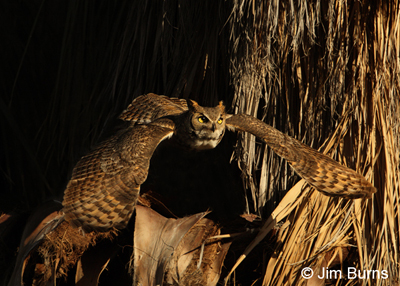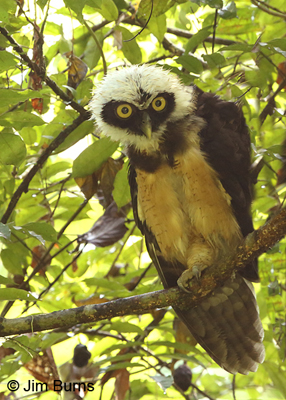
It is 6:00am on the morning of the second most risible holiday on the calendar. Thirty-six hours ago I was standing ankle deep in a rainforest swamp with a man whose language I do not speak, gazing up just like this at another owl species, a Spectacled Owl and its brancher. Jose Alberto Perez, affectionately known as “Cope,” is a wildlife artist and photographer based near Guapiles, Costa Rica, and of course we do have a common language, the language of love and respect for the planet, its creatures, and their natural environment.
Cope is a naturalist first, trained by boots-on-the-ground observations over many years in the forest around his small property where the Caribbean lowlands meet the foothills of Turrialba Volcano. My connection to nature has been weakened by a lifetime spent in modern urban settings. Cope’s has not. When he awakes in the morning there are wood-rails and glass frogs at the pond outside his rural home, and as soon as he replenishes his feeding stations he will have four species of hermits, three species of honeycreepers, and both of Costa Rica’s toucans visiting for breakfast.
Cope greets us with a smile and a deferential apology in Spanglish about his limited English. Deva defers back with her even more limited Spanish. He brings out coffee, another language I don’t speak, and breakfast snacks as we watch from his blind. Birds are streaming in, but this little slice of Eden is about so much more than avian fellow travelers. On our way up his two-track driveway we have passed under a foot long(!) Walking Stick (remember, this is the tropics), he shows us a Parrot Snake, perfectly camouflaged from us but not to his practiced eyes, and he promises Honduran White Bats roosting under palm leaves when we hike in for his owls.
Cope’s yard and its environs are an entire tropical ecosystem writ small, and with encyclopedic knowledge of his place in it and his considerable artistic skills he is doing all he can to show it, share it, and preserve it. It is a hard place to leave. “Language” is, after all, far more than the spoken or written word. Language is shared desires, instincts, and emotions, the nuances of which can be read on faces and parsed from gesture and tone of voice, no words needed.
What we share with Cope is our humanity and, with that, an understanding of the preciousness of the planet we inhabit. “Owl,” the thought of “owl,” the emotions “owl” evokes in all of us, these comprise the language of humanity. Let us hope we never lose this language, this commonality that binds all of us who are, after all, of the same species.